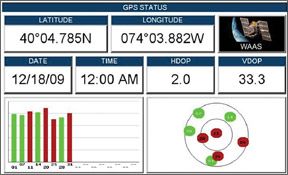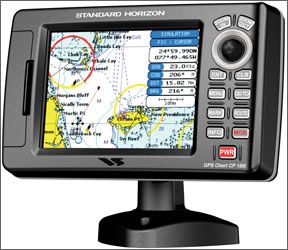I recently installed an 80-watt solar panel on my bimini. I am concerned that this may have reduced the positional accuracy of my GPS, a Standard Horizon 180i, which has an internal antenna mounted directly below the solar panel. Do solar panels cause interference with GPS signals?

Images courtesy of Standard Horizon
Robert Boeckh
1978 Ericson 34t
Sidney, B.C.
The solar panel should not affect the accuracy of your GPS or result in any irregular readings; however, it could potentially reduce the strength of the GPS satellite signal.
According to Scott Iverson at Standard Horizon, an easy way to determine whether the solar panel is impacting signal strength is to select the 180is GPS status page (see photo below), note the signal strength while the unit is under the bimini, and then move the GPS to an area on the boat that has a clear view of the sky and note the signal strength in that location; then, compare the two figures. Even a properly installed GPS can be subject to some form of interference, and several government agencies are continually working to identify and mitigate these effects. To paraphrase Mr. Twain, the reports on the death of traditional navigation and piloting skills have been greatly exaggerated.
Silicone Contamination

As far as I know, the problem of silicone contamination on fiberglass has not been solved. Because silicone is added to many consumer products, including furniture polish and car waxes, it is becoming darn near ubiquitous.
A Web search turns up many “solutions,” notably fish-eye eliminator, but in my experience, these don’t work well or have their own drawbacks. Fish-eye eliminator, for example, further contaminates everything it touches. Using shellac as a primer/barrier coat is sometimes useful but its not foolproof. Has PS “been there, done that” already?
B.L. Sachs
Flicka, Hallberg-Rassy 31
Austin, Texas
To get rid of silicone contamination on a fiberglass surface, your best bets are time (weathering), using a paint-specific washing detergent like Awlwash, and the not-so-green but effective habit of doing an acetone or MEK wipedown with a cotton cloth prior to sanding the surface.
Be sure to use clean cotton rags and change them regularly during the wipedown.


































